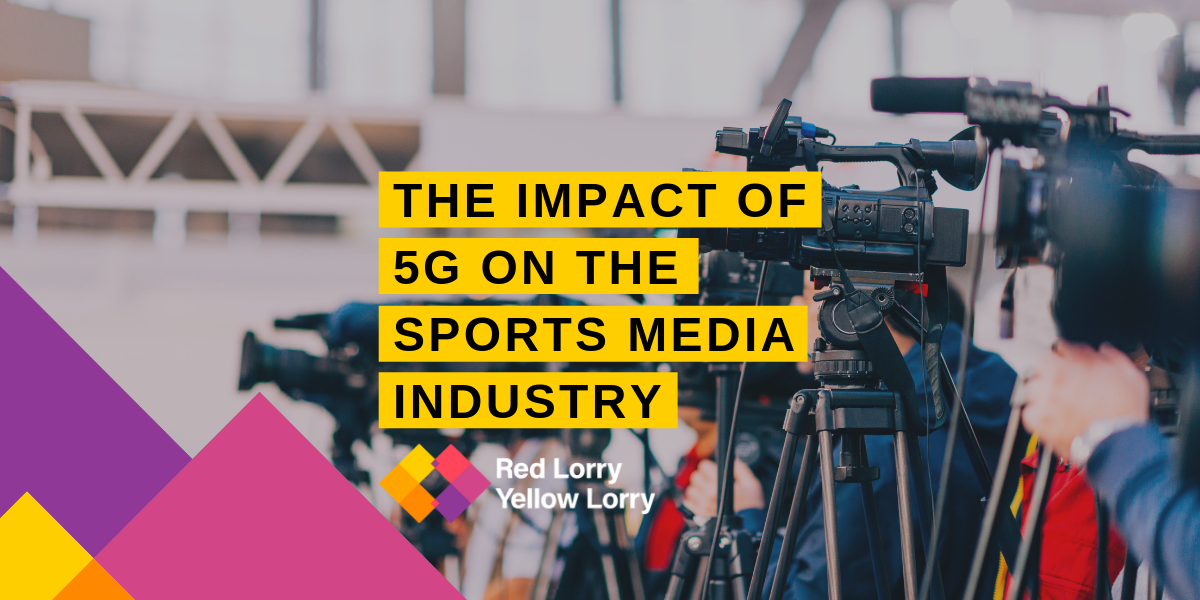With mobile operators beginning to roll out 5G this year, we can look forward to faster, more reliable connections for mobile devices – download speeds are expected to approach 1Gb/s – and the promise of high-speed wireless local area networks (LANs).
5G networks will also help power the Internet of Things, allowing for an even smarter and more connected world. But what does all this mean for the media and entertainment industry – and for sports media in particular?
In this article, we take a look at the impact that senior sports media executives believe the advent of 5G will have on the sports experience, and the opportunities it will open up for improving both sports production and digital fan engagement.
5G’s impact on sports production
Discussing how 5G will affect sports production, BT Sport’s director of mobile strategy, Matt Stagg, explains that 5G will make remote production practical in more situations due to its throughput and low latency, thereby reducing the industry’s carbon footprint.
“We don’t have to send OB trucks everywhere, or send all the people needed for remote productions on the road in their cars,” he says.
He believes this will also result in a better work-life balance for production staff who spend lots of time on the road traveling long distances to sports venues and are rarely home at weekends.
FOX Sports’ senior vice president, Field & Technical Operations, Dennis Wallace, concurs, saying that the advent of 5G will make everything better for remote production. He points out that with bonded cellular, it takes nearly two seconds for the camera to respond and that 5G will eliminate a lot of the differences between what can be done with wired vs. wireless cameras.
IBM Aspera offering manager, Jim Ewaskiew, explains, “On the capture/production side, local 5G nodes will support much improved wireless camera connectivity, higher bandwidth, high resolution, and further coverage.”
Stagg points out that 5G will also bring creative benefits: “5G allows the freedom of movement of cameras and opens up creativity options for directors to be freer when calling shots and pursuing their ideas,” he says.
Powering engaging fan experiences
As well as opening up new production options, 5G is also set to transform the fan experience and offer new levels of sports enjoyment. “On the consumption side, consumers can have richer experiences with augmented reality, game and player metrics, and beyond,” says Ewaskiew.
For example, MediaKind’s CMO, Arun Bhikshesvaran, says that 5G will enable sports media companies to create engaging, complementary experiences, such as with 360-degree cameras.
This is an area Intel Sports is already pursuing. The company’s managing director David Aufhauser, explains how it is working with leagues and teams to provide new ways for fans to experience live content that involves interactivity using technologies like AR and VR. He believes 5G will be one of the drivers to enable the low latency and high bandwidth needed to deliver those experiences.
However, it can’t just be about the tech. Wallace argues that while 5G brings the potential to customize a broadcast, people like to be led through a story. He believes sports media companies need to give people augmented features while retaining control of the story.
In contrast, Aufhauser points out that it’s about giving fans choice, and claims that younger audiences are more likely to be interactive with content.
Finally, Amazon Prime Video’s global head of digital video playback and delivery, BA Winston, believes that 5G will help lead the company towards what its customers want, helping them create interesting and new experiences for customers.
Socializing the sports experience
Another question is whether 5G can help sports media companies deliver a social sports experience. According to Wallace, at its core, sports is tribal – people like to watch it together. And media companies haven’t yet cracked the code to making sports a social experience akin to sitting in a stadium. When it comes to the socialization of sports, “the devil’s in the detail,” he says. Companies can do it but they haven’t yet achieved a seamless experience. He believes 5G can help with that.
Stagg agrees that people want to be in the venue or in a pub with their mates and says the question is, “How do we build on that social interaction?” Ultimately, he believes that it’s what 5G enables that we don’t yet envisage that will be the most exciting.
As sports organizations seek to grow TV audiences and get more fans into venues, 5G opens up new possibilities for improved production models, immersive fan experiences, and smart stadiums that allow fans to engage with their favorite teams and athletes like never before. It promises an exciting future for sports media companies and fans alike.
To find out more about our b2b PR and marketing services, visit our Contact Us page, drop us a line at hello@rlyl.com or call Kim Willsher at (+1) 310 773 3760.
Sign up to our newsletter



